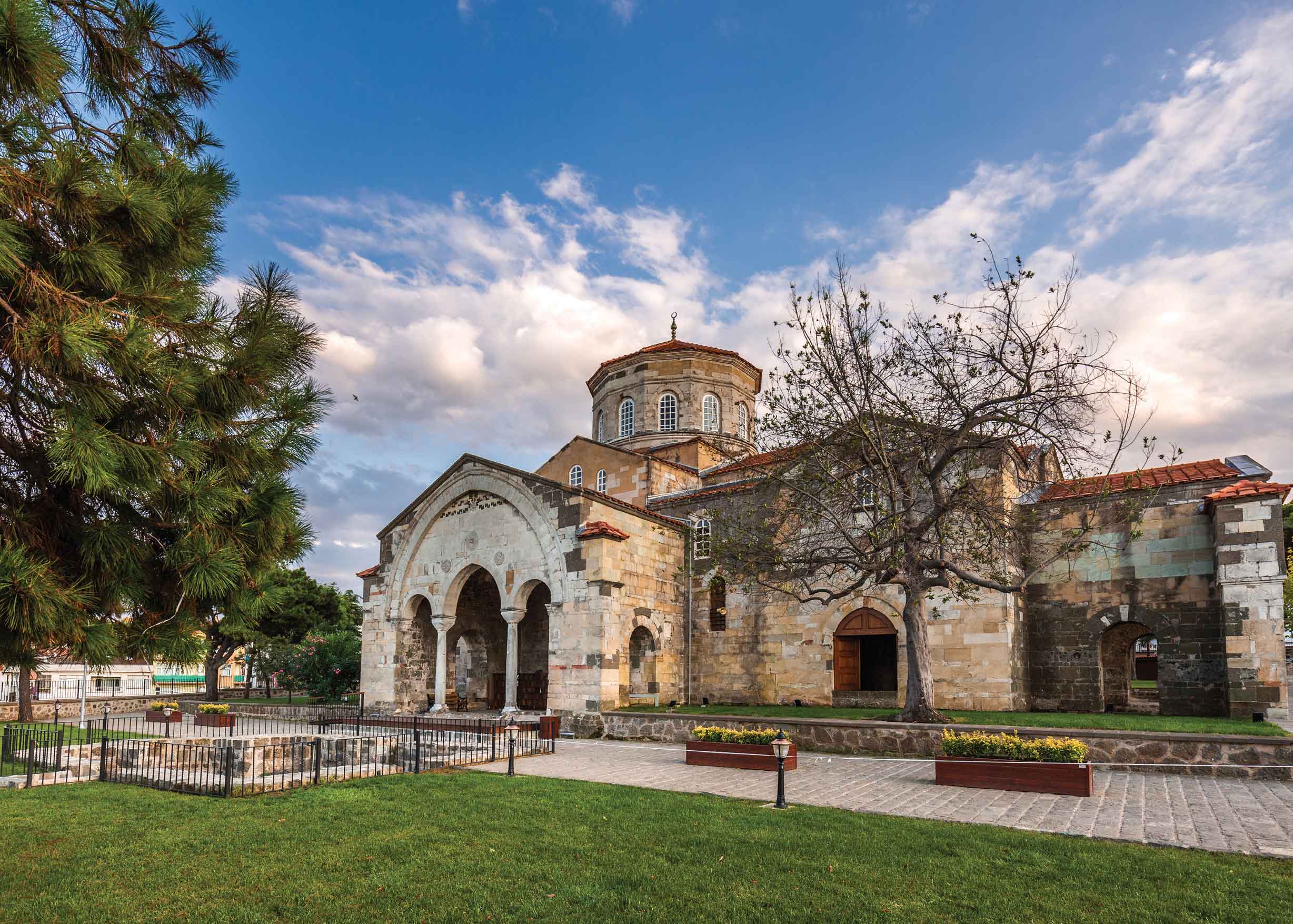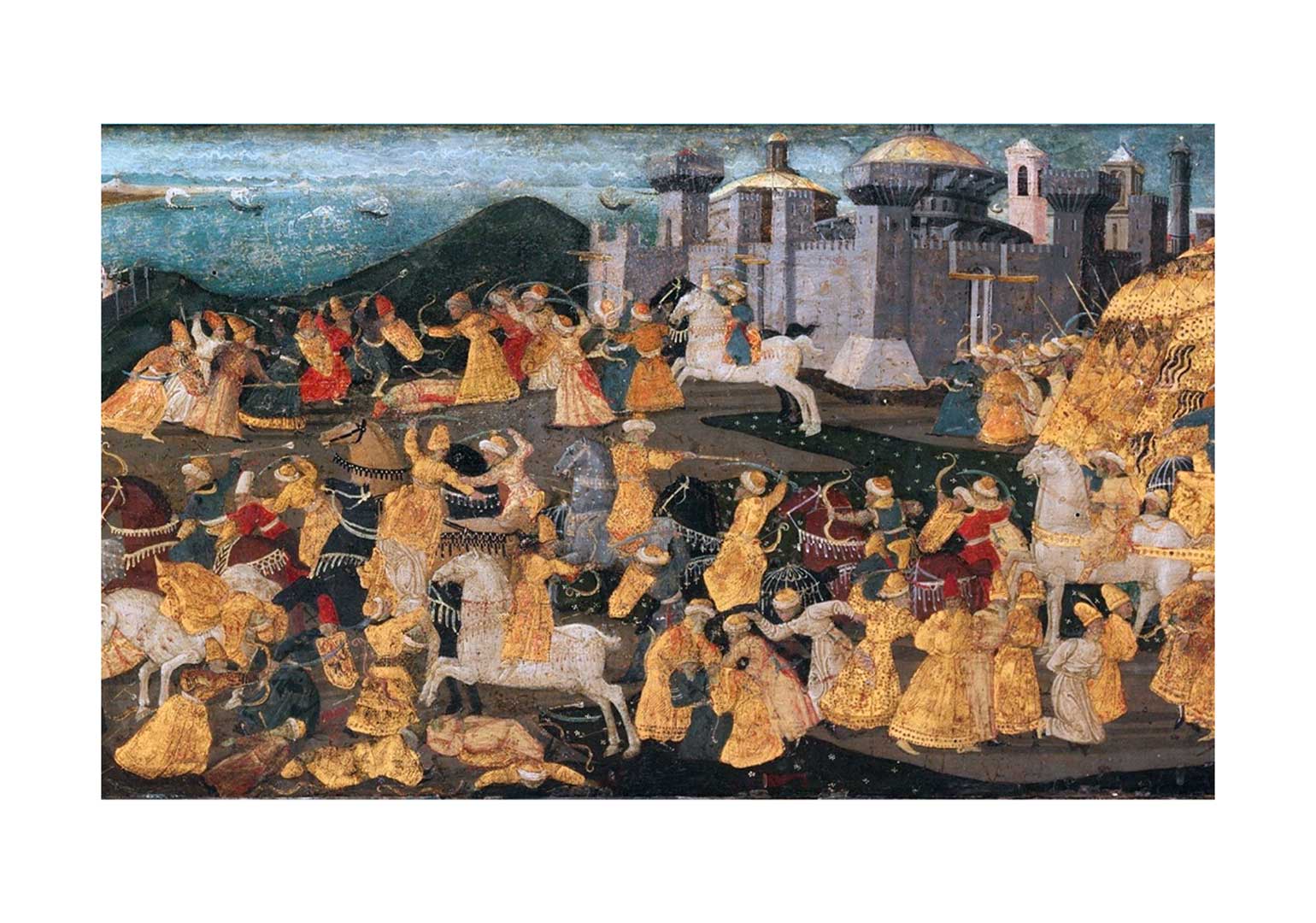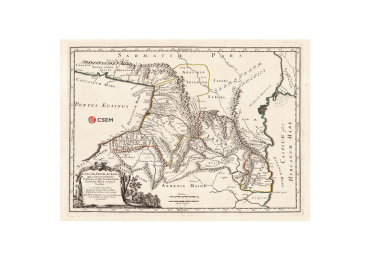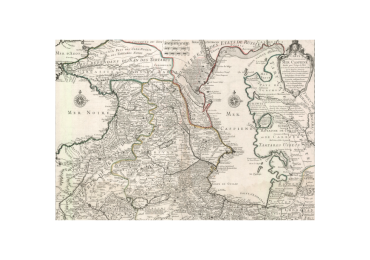Trebizond was a key political and economic center on the southern Black Sea coastline for centuries. Founded by Milesian colonists in an area inhabited by Georgian tribes, this great city attracted the interest of various empires. Major trade routes led to Trebizond and reached countries along the Black Sea coastline and beyond. The Trapezuntine Empire, which was created with the help of the Kingdom of Georgia, outlasted Byzantium and preserved its Roman heritage
The history of the city of Trebizond begins during an era of Greek colonization in the 8th century BC when Ionian Greeks living on the west coast of Asia Minor began to travel to the Black Sea and establish colonies. The new city had to be established in a strategically important location convenient for trade, naturally well-protected, and favorable for establishing a port. At the same time, it was necessary to negotiate with the local tribes or subjugate them by force.
According to tradition, Trebizond was founded in 756 BC by colonists from the Milesian city of Sinope. In ancient times, the southeastern coast of the Black Sea was inhabited by Colchians, while other Georgian tribes lived deeper in Asia Minor. The Greek colonists did not attempt to conquer those tribes, nor did they have the capability to do so. They preferred to maintain peaceful relations with the locals, traded with them and obtained precious resources.
In the 6th century BC, Trebizond became part of the Achaemenid Empire but remained under local rule and continued to develop, pursue active trade, and interact with the Greek polises on the Balkan Peninsula. In 401 BC, the city accommodated 10,000 Greek mercenaries who had participated in the Achaemenid Civil War. In his work Anabasis, Greek historian Xenophon, one of the leaders of this campaign, describes the joy soldiers felt when they saw the sea for the first time after their long inland journey. This was their first contact with the Greek world after a lengthy retreat. The men were hopeful, although there was still a long way to the Aegean Sea.

In the 4th century BC, Alexander the Great conquered the Persian Empire, and Trebizond became part of the Hellenistic World. Following the power struggle between the great conqueror’s successors, this important trading city found itself part of the Kingdom of Pontus. Together with Sinope and Amisos, Trebizond became one of the main urban centers in the mighty empire of Mithridates VI Eupator.
Trebizond’s strategic location attracted the attention of Roman and Byzantine rulers. Emperor Hadrian built a harbor for the Roman fleet in the city in the 2nd century AD. Byzantine Emperor Justinian (527-565 AD) viewed Trebizond as a key logistics hub for the supply of his troops in the war against the Persians. During his rule, Justinian renovated numerous buildings in the city. According to the Byzantine historian Procopius of Caesarea, Trebizond supplied Lazica with grain, which was vital to the local population that relied heavily on ghomi. Grain and wine from Trebizond also fed the locally stationed Byzantine soldiers, for whom the local resources were insufficient.
British historian Anthony Eastmond points to Trebizond’s commercial importance, which made the city famous in medieval Western Europe. It was a key port and the first point of entry for cargo transported from China via the Silk Road. This is where the interests of the Italian trading powerhouses of Venice and Genoa intersected. In the 15th-century work Practice of Commerce, by the Florentine merchant Francesco Balducci Pegolotti, we read that Trebizond used the same units of measurement as Persia, pointing to close commercial relations with the latter. This fact is supported by archeological findings since several stashes of Trapezuntine coins have been found in Tabriz. On his way back from China, the Venetian merchant and traveler Marco Polo passed through Trebizond and was not impressed with what he saw. His uncle Matteo complained that Emperor John II Comnenus, considered one of the greatest benefactors of the Byzantine Church, was a fraud who extorted four thousand hyperpyrons from him.
Trebizond’s remoteness from Western Europe meant that mythological and romantic accounts overshadowed factual ones. This was a different Trebizond – a beautiful city full of attractive women, decadent despotic emperors, intrigue, and luxury.
According to Anthony Eastmond, such myths were formed partly due to Trebizond’s huge commercial importance – access to oriental silk and spices through caravans from the East and emperors enriched by the silver deposits of the Pontus Mountains to the south. There was little truth to the myths about Trebizond, but they soon overshadowed the reality.
We also find a very different Trebizond in European literature. Characters in Gargantua by Francois Rabelais (1534) and Don Quixote by Miguel de Cervantes (1605) express their wish to become kings of Trebizond without understanding what that might entail. In 1616, Londoner Thomas Gainsford published The History of Trebizond in Four Books. The title is misleading, as it is neither a history book nor is it about Trebizond. It is a collection of romantic stories that invoke the name of the city for the reader to imagine a magical dreamland. The greatness of Trebizond is also exaggerated on a Florentine dowry box painted in the 1460s, depicting the last days of the Byzantine Empire – the battles for Constantinople and Trebizond. The latter is displayed as a great fortress with massive towers protecting the luxurious palaces and temples built within the city’s walls. It looks nothing like the actual narrow city nestled between steep ravines and the Black Sea coast. The fierce battle that takes place in the field in front of the city is also a figment of the imagination. Rather than depicting the failed defense of Christian cities against the Byzantine Empire, it shows an Ottoman defeat to please the Christian audience who wanted to see the myth of Ottoman invincibility shattered.

In contrast to Europe, medieval Georgia was familiar with neighboring Trebizond. Georgians realized this city’s importance from a commercial, economic, military, and political point of view. The cities of Western Georgia had close economic ties with the Genoese and Venetian colonists on the Black Sea coast and with Trebizond. Other key cities in the trading system of the Near East included Ani, Kars, and Khlat. Historian A. Tabuashvili points out that the road passing through Barda from the cities of northern Persia stretched from Dvin to Trebizond via Ani, Kars, and Erzurum (Karin). We can view this road as one of the branches of the Silk Road. Trebizond, in turn, was an important economic center in this system. Many foreign merchants would arrive in the city to have their products shipped to locations around the Black Sea. At the turn of the 12th-13th centuries, the newly powerful Georgian state tried to bring a significant section of this route under its influence since this meant dominating a trade highway of great economic importance.
At the beginning of the 13th century, Georgia already controlled Armenian territories and fought for possession of Khlat. At the same time, the Fourth Crusade took Constantinople and established the Latin Empire in its place. Separate political entities emerged on the territory of Byzantium, including the Empire of Nicaea in Asia Minor and the Despotate of Epirus in the Balkans. The ruling dynasty of Byzantium, the House of Angelos, whose relationship with the Kingdom of Georgia had been problematic, was overthrown. The former imperial family of Komnenos, who previously had significant influence in Asia Minor and were related to the ruling family of Georgia, became the rulers of Trebizond with the help of King Tamar and ruled this territory as emperors from 1204 to 1461. Trebizond became an ally, economic partner, and buffer on the western borders of Georgia. When Georgia fell under Mongol rule in the following centuries, Trebizond maintained a friendly relationship with Georgian monarchs. Diplomatic marriages were common. In addition to being the last Byzantine political entity, the Empire of Trebizond was the only Christian state neighboring Georgia before Russia appeared in the region.
Trebizond remained an economically important city under Ottoman rule. French traveler Jean Chardin talks about the close maritime and trading links between Trebizond and Western Georgia. However, the Ottoman ascent to power in the Near East, the transformation of the Black Sea into an Ottoman Lake, the redirection of European interests towards the West, and new geographic discoveries led to a weakening in the importance of the Silk Road. It also initiated a decline in the importance of the former capital of the Comnenian Empire, which became a peripheral city after a while.
Trebizond, once the promised land in ancient and medieval history and Western European mythology, is now a prominent tourist destination on the Turkish Black Sea coast. Historical sites from all eras speak of its great past.












